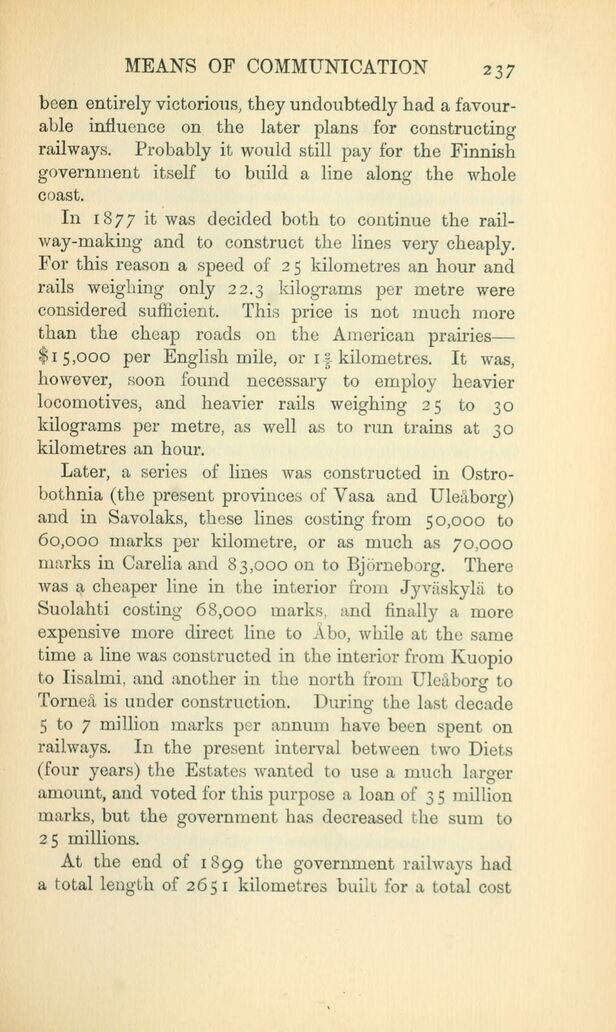
Full resolution (JPEG) - On this page / på denna sida - IX. Means of Communication

<< prev. page << föreg. sida << >> nästa sida >> next page >>
Below is the raw OCR text
from the above scanned image.
Do you see an error? Proofread the page now!
Här nedan syns maskintolkade texten från faksimilbilden ovan.
Ser du något fel? Korrekturläs sidan nu!
This page has been proofread at least once.
(diff)
(history)
Denna sida har korrekturlästs minst en gång.
(skillnad)
(historik)
been entirely victorious, they undoubtedly had a
favourable influence on the later plans for constructing
railways. Probably it would still pay for the Finnish
government itself to build a line along the whole
coast.
In 1877 it was decided both to continue the
railway-making and to construct the lines very cheaply.
For this reason a speed of 25 kilometres an hour and
rails weighing only 22.3 kilograms per metre were
considered sufficient. This price is not much more
than the cheap roads on the American prairies —
$15,000 per English mile, or 12/5 kilometres. It was,
however, soon found necessary to employ heavier
locomotives, and heavier rails weighing 25 to 30
kilograms per metre, as well as to run trains at 30
kilometres an hour.
Later, a series of lines was constructed in
Ostrobothnia (the present provinces of Vasa and Uleåborg)
and in Savolaks, these lines costing from 50,000 to
60,000 marks per kilometre, or as much as 70,000
marks in Carelia and 83,000 on to Björneborg. There
was a cheaper line in the interior from Jyväskylä to
Suolahti costing 68,000 marks, and finally a more
expensive more direct line to Åbo, while at the same
time a line was constructed in the interior from Kuopio
to Iisalmi, and another in the north from Uleåborg to
Torneå is under construction. During the last decade
5 to 7 million marks per annum have been spent on
railways. In the present interval between two Diets
(four years) the Estates wanted to use a much larger
amount, and voted for this purpose a loan of 35 million
marks, but the government has decreased the sum to
25 millions.
At the end of 1899 the government railways had
a total length of 2651 kilometres built for a total cost
<< prev. page << föreg. sida << >> nästa sida >> next page >>